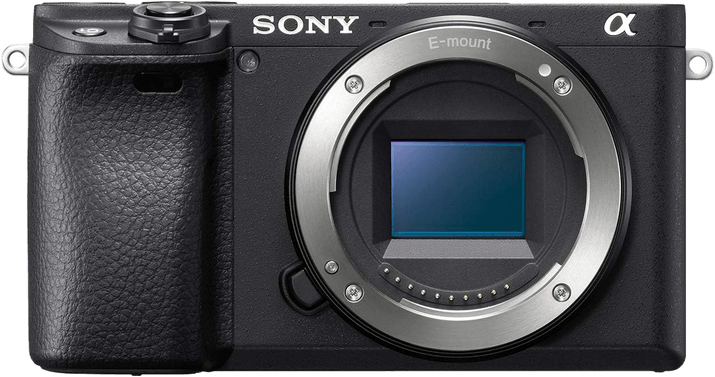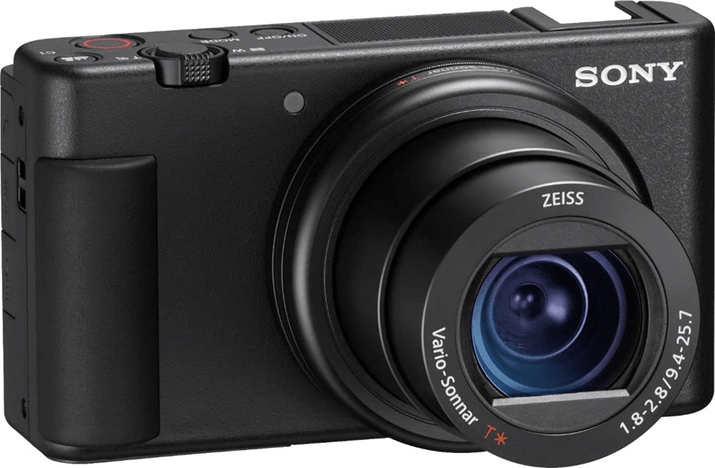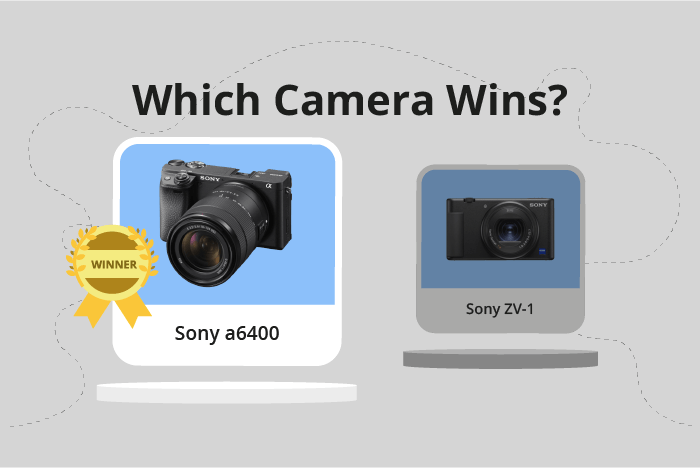Sony a6400 vs ZV-1 Comparison
Sony a6400

Sony ZV-1

The Sony a6400 takes the lead with a score of 70/100, while the Sony ZV-1 trails at 65/100. Both cameras share common specifications such as being released in 2019 and 2020, with launch prices of $900 and $800, respectively. The a6400, being a mirrorless camera, has a larger size (120 x 67 x 60mm) and heavier weight (403g) compared to the compact ZV-1 (105 x 60 x 44mm, 294g).
The a6400’s higher score signifies its better performance and features. However, the ZV-1’s compact design and lower launch price make it more accessible for casual users or those on a budget. Ultimately, the a6400 is a better camera, while the ZV-1 offers a more affordable and portable option.
Sony a6400 vs ZV-1 Overview and Optics
The Sony a6400 narrowly wins in the optics comparison with a score of 68/100, while the Sony ZV-1 scores 67/100. Both cameras share some common specifications, such as the CMOS sensor type and the Bionz X processor. However, they differ in other crucial aspects that impact their optical performance.
The Sony a6400 boasts a higher megapixel count at 24.2, compared to the ZV-1’s 20 megapixels. This difference allows the a6400 to capture more detail in images. Additionally, the a6400 has a larger APS-C sensor size and a slightly higher DXOMARK score of 83 for the sensor, which contributes to better image quality in various lighting conditions. The Sony E lens mount on the a6400 also provides users with the flexibility to interchange lenses, catering to different shooting scenarios.
In contrast, the Sony ZV-1 has a smaller 1″ sensor size and a fixed lens mount, limiting its adaptability to diverse photographic situations. However, the ZV-1 has a faster shooting speed of 24 frames per second, which is advantageous for capturing fast-moving subjects. Moreover, the ZV-1 features image stabilisation, ensuring steadier footage and reducing the impact of camera shake during handheld shooting.
Considering these points, the Sony a6400 is the superior choice for those seeking higher image quality and flexibility in lens options. On the other hand, the Sony ZV-1 is better suited for users who prioritize shooting speed and image stabilisation. Ultimately, the choice between these two cameras depends on the specific needs and preferences of the photographer.
Sony a6400 vs ZV-1 Video Performance
The Sony a6400 and the Sony ZV-1 both have a video score of 91/100, indicating that they offer similar video capabilities. These cameras share common specifications, such as a maximum video resolution of 4K, video dimensions of 3840 x 2160, a maximum video frame rate of 120fps, and built-in time-lapse functionality.
Despite the identical scores, the Sony a6400 provides better video quality in certain aspects. The a6400 is known for its excellent autofocus system, which ensures that the subject remains sharp and in focus during video recording. This feature is particularly useful for videographers who need to capture fast-moving subjects or want to create a smooth focus transition between different parts of the scene.
On the other hand, the Sony ZV-1 has its own advantages when it comes to video recording. The ZV-1 is designed with a compact form factor, making it a more portable option for those who need a camera for on-the-go video recording. Additionally, the ZV-1 features a built-in ND filter, which allows for greater control over exposure during video recording in bright conditions.
Taking these factors into account, both cameras excel in different aspects of video recording. The Sony a6400 stands out with its superior autofocus system, while the Sony ZV-1 offers a more portable design and built-in ND filter. Ultimately, the choice between these two cameras will depend on the specific needs and preferences of the user, as both offer high-quality video capabilities.
Sony a6400 vs ZV-1 Features and Benefits
The Sony a6400 wins the features comparison with a score of 81/100, while the Sony ZV-1 scores 68/100. Both cameras share several specifications, including a 3-inch screen size, 921600-dot screen resolution, touchscreen, flip screen, and the absence of GPS. Additionally, both have WIFI and Bluetooth capabilities.
The Sony a6400’s superiority lies in its higher feature score. This camera offers a better overall package, making it more versatile and suitable for a wider range of photography and videography needs. The a6400’s features cater to both amateurs and professionals, ensuring satisfactory performance and user experience.
On the other hand, the Sony ZV-1 does not surpass the a6400 in any specific feature. However, its lower score does not necessarily imply that it is a poor-quality camera. The ZV-1 could still be a suitable option for users with specific needs or preferences, particularly those prioritizing compactness and ease of use. The ZV-1’s design and features target content creators and vloggers, making it an ideal choice for this specific audience.
In comparing the Sony a6400 and ZV-1, it is clear that the a6400 offers a more comprehensive set of features, making it the winner in this comparison. However, the ZV-1 remains a viable option for content creators and vloggers, as its design and features cater to their specific needs. Ultimately, the choice between these two cameras depends on the user’s requirements and preferences.
Sony a6400 vs ZV-1 Storage and Battery
The Sony a6400 triumphs over the Sony ZV-1 in storage and battery with a score of 37/100 compared to the ZV-1’s 29/100. Both cameras share similarities, including one memory card slot and USB charging capabilities. They also accept SD, SDHC, and SDXC memory cards, as well as Memory Stick Duo formats.
The a6400 outperforms the ZV-1 with its superior battery life of 410 shots, compared to the ZV-1’s 260 shots. Additionally, the a6400 uses the NP-FW50 battery type, which contributes to its longer battery life. On the other hand, the ZV-1 accepts Memory Stick Pro Duo and Pro-HG Duo cards, offering slightly more versatility in memory card options. However, this advantage does not outweigh the a6400’s significantly better battery life.
Considering the differences in storage and battery, the Sony a6400 proves to be the superior choice due to its longer battery life, ensuring longer shooting sessions and fewer interruptions.
Sony a6400 vs ZV-1 – Our Verdict
Are you still undecided about which camera is right for you? Have a look at these popular comparisons that feature the Sony a6400 or the Sony ZV-1:

